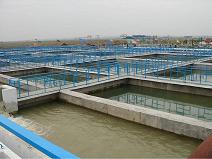

REMOVAL OF SILICA
Water Treatment of Silica
Natural waters, generally, contain about 5-8 mg/l of silica (Si0,). Another important source of silica in water is the sand watertreatments filter. When water treated by lime-soda process is filtered through a sand water filter, a good amount of silica dissolves in it (forming calcium and magnesium silicates) due to alkaline nature of waters. Inside the boiler the concentrations of silicate incense and they get deposited as “silicate scale“, which very hard, quite adhering, very poor conductor of heat and extremely difficult to remove even with chisel and hammer. In actual practice, silicates of calcium and magnesium acts as cements and they even bind together other particles present inside boiler into a very hard scale. In high-pressure boilers, the amount of silica must be kept very low, since silica dissolves even in steam, thereby the silica going along with the steam deposits on turbine blades, nozzles, etc. At about 40 kg/cm steam pressure, about 5 ppm of silica dissolves in steam and goes along with it. The corresponding amount of dissolved silica in steam increases to 35-40 ppm at 100 kg/cm2 pressure and the extent of dissolved silica is still higher as the pits-suits increase more and more. Silica carry over by steam is believed to la dot to carry one of taller drops containing dissolved silica along with steam (i.e., priming). In super-heaters, water dries up and dry steam carries forward the silica. Silica finally get deposited on turbine blades, nozzles, thereby it distorts their shapes. Surfaces of nozzles and blades, sometimes, become uneven, thereby resistance to flow of steam increases. This causes loss in efficiency to the extent of about 10 per cent in a week’s time. Sometimes, even the catastrophic failure of rotating parts occur.
Removal of silica in water Can affected by :
- Using magnesium compounds during the hot lime-soda process of softening and recirculating the sludge. Magnesium oxide has been found to quite effective in this regards. Sludge containing Mg(OH)2 is said to absorbs silica from the water However, this method should be avoided since magnesium is quite undesirable oils in feed waters ;
- Convening silica into fluosilic acid. H2SiF6 (which is strongly ionized), by adding calculated quantity of sodium fluoride ( NaF ). The water is then passed through hydrogen exchanger. Thus
SiOs + 6NaF + 3RH2 —-> 3Na2R + H2SiF6 +2H20
For each ppm of SiO2, generally, 4.2 ppm of sodium fluoride is required.
Leave a Reply







 LIKE TO GET UPDATES
LIKE TO GET UPDATES  TO GET EXPERT GUIDE
TO GET EXPERT GUIDE